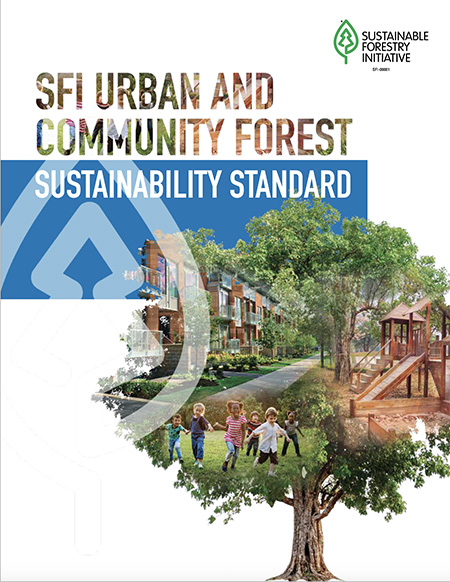By Annie Perkins, SFI Senior Director, Green Building and Supply Chain
In the wake of remote work during the pandemic, a study of human resources executives found that most are struggling to get staff back into the office. Here is one solution: move into a mass timber building.
Several studies have shown what many people already know: wood, like no other building material, makes us calm, happy, less stressed, and more productive. Researchers call this wood’s biophilic benefit. The best part of building with SFI-certified wood is how it makes you feel when you step inside: It’s comfortable, cozy, and inspiring. When I walk into a mass timber building, it is like a blanket of love wrapped around me. It is easier to relax in a building made of wood. I should know: the home where I grew up and where I still live, in the city of Afton on the eastern border of Minnesota, is made of mass timber, with glulam beams and columns and wood ceilings. I attribute much of my good health to the warm comfort of my natural wood surroundings.
Glulam, or glued laminated timber, is made by gluing dimensional lumber together to form strong structural components. This engineered wood product, with seismic and fire performance similar to concrete or steel, is a lightweight, strong, versatile material with which to build big structures. Thanks to this innovative technology, architects and engineers can build just about anything out of wood. That’s good for our health and good for the environment, too. Humans have built with wood for a long time; log homes sheltered early American settlers. One Japanese Buddhist temple made of cedar dates from 607 AD. In the 1800s, New Zealand built its parliament buildings out of wood.
Today, mass timber is moving from niche to mainstream. Updated building codes open a path for tall wood buildings across the continent. Not long ago, I visited the University of Idaho‘s new sports arena, Idaho Central Credit Union Arena, built of mass timber. Much of the wood in the arena was locally sourced from SFI-certified forests in Idaho with requirements to help protect water quality, biodiversity, wildlife habitat, species at risk, and forests with exceptional conservation value.
The U.S. Army also plans to build more with wood for housing, counterterrorism, and force protection uses. The Army is conducting research on mass timber with the University of Washington and Washington State University, which, if successful, will lead to mass timber solutions from Western Hemlock, a tree species common in the Pacific Northwest. The Army aims to collaborate with nearby Indigenous Tribes to supply the timber.
The provinces of British Columbia and Quebec have also spearheaded work to build with mass timber, with more than 600 mass timber projects now completed across Canada and the number of mass timber buildings in the United States continuing. What jazzes me the most about building with mass timber is that when sourced from sustainably managed forests, it offers a multitude of solutions through one avenue that addresses a wide range of challenges facing us today.
The building industry is responsible for nearly 40% of greenhouse gas emissions. Wood buildings buck this trend due to much lower embodied carbon than traditional building materials. Wood is the only sustainable, natural, and renewable building material, and when trees from certified forests go to the mill, SFI-certified organizations plant new trees to replace them. As they grow, the new trees pull more carbon from our air. Meanwhile, the wood in the structure stores carbon for the life of the building.
There are other benefits of building with wood. Organizations that specify and use wood in their projects support all of the work we do. When landowners certify their forests, SFI invests that revenue in supporting underrepresented folks within the natural resources sector through a multitude of partnerships and grant programs. We have a pathway that works to elevate communities and green careers, like forestry, conservation, and other natural resources careers, specifically in areas of underserved youth. For example, earlier this year, SFI gave a community grant to help students in Alabama and Georgia attend a three-day program to expose high school students to the opportunities and pathways in the forest and conservation sector.

Mass Timber is picking up steam. I look forward to attending the International Mass Timber Conference again this March in Portland. Then, in July, I will speak at the Mass Timber Group Summit in Denver. Thanks to sustainable forest management, for more than half a century, the net growth of U.S. and Canadian forests has exceeded our harvest. This means we have the raw material in our forests to grow the tall wood building renaissance. The future is bright for mass timber, a material we can use to create beautiful buildings benefiting people and the planet, buildings that nourish us all.
